I picked a helluva month to quit drinkin’.

Okay, not “quit”, per se, but definitely a self-imposed sabbatical toward beer. A beerbatical, if you will. Over the last couple of years, I’d naval-gazed my relationship with alcohol. Sure, I didn’t overdue it often, but questionable decisions had been made. That and it was no longer as “social” a beverage as it once was.
I hung out with maybe five other dudes who drank – never all at once. That’s not a party; that’s a Family Guy episode. And I won’t even go into the missing hubcap on my car.
As a result of this catharsis, I decided a break was in order. I wish I’d known what was ahead of me before I did so. Work drama, matters of the heart, and other familiar growing pains manifested in rapid succession. Good things were happening, true, but they were automatically offset by a perpetual feeling of being kneed in the groin.
I needed an outlet – a social one.
Enter the Portland Tea MeetUp group.
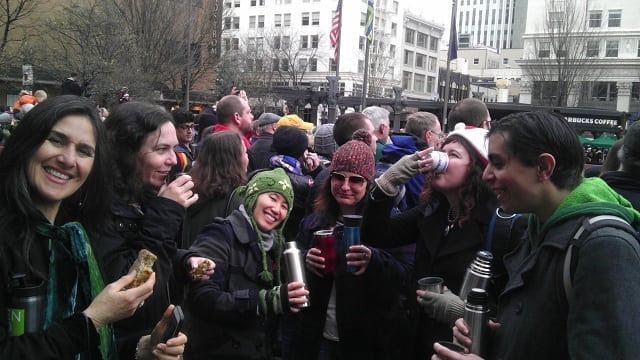
Tea – the beverage that never steered me wrong. I drank it often, but I was rarely social with it. Sure, I was social online about my tea consumption, but rarely in real life. There was a burgeoning tea community present in Portland, but I stuck to its periphery like some kind of creeper with a cup. I thought it high time to change that.
As luck would have it, a meet-up was scheduled for this weekend. The reason? Freaking tubas!!! In Downtown Portland, situated at Pioneer Square, was a holiday tuba concert. Tubas…playing Christmas carols. And we would drink tea during it.
Everything about that sounded amazing.
The biggest issue for me? Finding the perfect tea to bring. The internal struggle didn’t last long. I chose the best black tea I’d had all year.
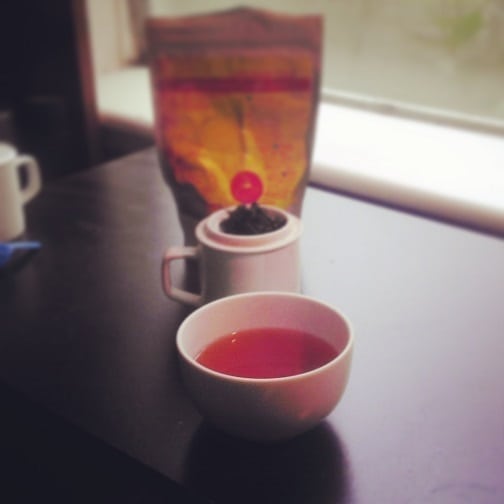
Black Fusion, Autumn Flush 2014, from the Doke Tea Estate.
Yes, I’m aware I’ve already written about it. There’s even a Batman Brews video floating around extolling its virtues. But that was only the first flush version. The one I had in my possession now was the autumn flush. And it was perfect.
Like the first flush, there were notes of nuts, spice and malt – betraying it’s assamica heritage – but for the autumnal crop, there was an added nuance. I didn’t quite put my finger on it until the day I brewed it for the tuba gathering. There was a strong sensation I had while tasting it that reminded me of honey. The autumn flush was sweeter and more textured than the first.
*Sigh* Oh yeah…back to the meet-up.
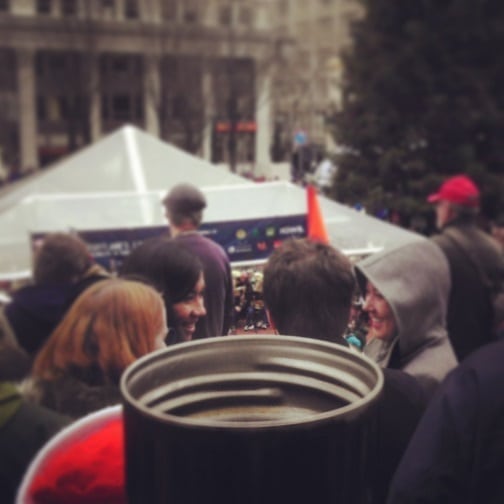
I was almost late to the gathering. Traffic was a particularly artful brand of “SUCK!” that day, and I had a prior engagement on the other side of town. Along with my expected road rage was a feeling of…dread. It wasn’t as if I hadn’t socialized with tea before, but rather that I wasn’t particularly good at it. I’m a bit of a geek, can’t help it.
Luckily, so were they. The moment I arrived, I felt like I was in like company. Three folks brought canisters of chai. One particular gent was rockin’ two travel carafes. One held a high-oxidized Taiwanese oolong; the other, a seven-year-aged purple varietal pu-erh. I partook of both.
The purple varietal…oh my.
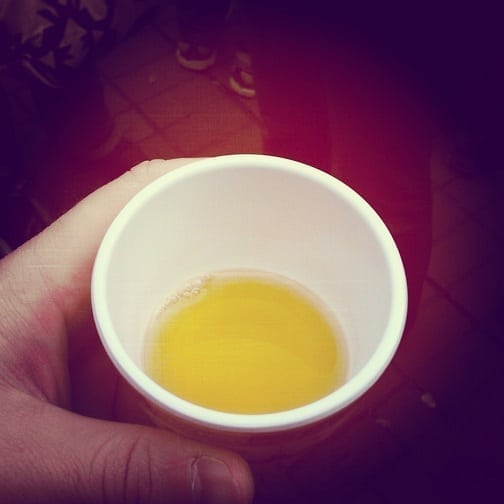
Another of the group members brought cups and homemade banana bread for the sharing. It went perfectly with…well…everything. Particularly with the tea.
And in the background, tubas played. The square was jam-packed with people, however. I think I caught a glimpse of, maybe, one tuba – two at the most – until the crowd dispersed. If I had one complaint about the performance, it was that the carols they chose were too down-tempo. If you’re rockin’ a gosh-durned tuba, you must have bombastic carols in your rotation. “Little Drummer Boy”, “Hark! The Herald Angels Sing”, etcetera. While the concert was nice, it faded into background noise over conversations of tea and general geekery.
I did have moments of occasional social faux pas, though, particularly when I uttered the line, “I am a man, and the world is my toilet!” Yes, I was sober. Tea drunk, maybe…but sober.
In closing, I think I could get used to this “tea socializing” thing.
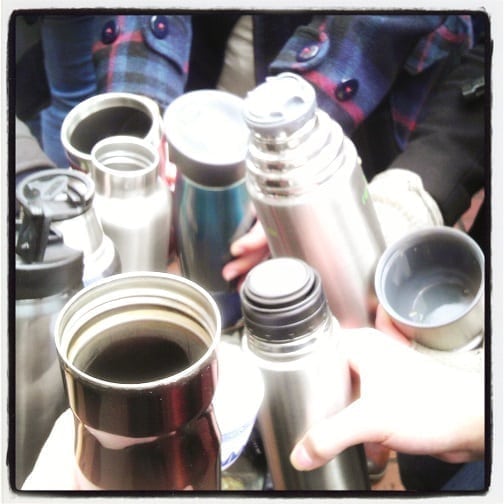
Next time, I’ll work on the tact.






























































